
Animated films have been captivating audiences both young and old for decades, and its cinematic roots can be traced as far back as the eighteen hundreds. What began as simple, short films, eventually evolved into full, feature-length movies–the first of which came in 1937 with Disney's classic,
Snow White and the Seven Dwarfs. It immediately became a critical and commercial jewel, launching a multitude of other illustrious animated films over the course of the next fifty years. With the exception of a handful of sloppily outlined, overly-formulaic films, the genre continues to delight and captivate audiences both in the aesthetic and narrative sense. For many years, these films relied on traditional methods of animation, where characters and scenes, were painstakingly hand-drawn and painted over backgrounds, then photographed, and set to voice and a musical score. However, the genre experienced its most profound transformation in the late 1980's with the emergence of computerized animation. While technology was used to craft 3-D backgrounds, for a time, it wasn't until 1995 when the biggest breakthrough occurred–that's when Disney's Pixar, released
Toy Story, the first-ever, entirely computerized-animated, full-length, feature film.
There's a common misconception that animated films are only targeted to younger audiences. In fact, many movies appeal to the sensibilities of much older moviegoers too–including the parents. There's no denying that these films are gold mines, hauling in millions from the release itself and subsequent affiliated merchandise–but the successful ones aren't always the ones that make the most money at the box-office. What separates good animated films from the truly remarkable ones isn't that hard to understand–they draw you in with their first-rate animation and indelible characters, but also–and maybe more importantly–they emotionally cripple you with their poignant storylines. "Are you crying Dad?" "No!" "I have something in my eye." With two young children, I've spend the last ten years of my life watching, re-watching and re-re-watching, some beautifully crafted films.
As enjoyable and visually stunning as many of them are, some have these singular–albeit brief moments that affect me, and others, on a deeply personal level. For example, there's a beautiful
montage in
Up, which chronicles Ellie and Carl's relationship, that is both enchanting and heartbreaking. From their first vows, through life's highs–a new marriage, a new home and dreams of traveling the world together–to its lows–infertility, along with aging, sickness and the lonely void left behind after the loss of a loved one. Another such example is shown in
Toy Story 2, in the
scene in which Jessie shares a cautionary tale with Woody, about her own traumatic story of being cherished, then forgotten, and ultimately abandoned by her owner. Everything about the lamentable performance is animated gorgeously–and honestly it never hurts to have Sarah McLachlan's haunting voice playing in the background. Ugh, here come the waterworks. Dammit, they got me again.
In fact, almost every Pixar production features a vivid, heart-rending scene or two, most clocking in under ten minutes, which is emotionally-charged. Last year, two Pixar animators created a short entitled,
Borrowed Time, which not only continues the tradition of awe-inspiring imagery, courtesy of the recent advancement in hyper-realistic graphics as seen in
The Good Dinosaur, but also ventures into a more mature framework.
[embed]https://vimeo.com/187257744[/embed]
The animated featurette has been making its rounds since early 2015, and its creators are being lauded for their work of art. What makes
Borrowed Time so special, is that it immediately draws you in with its visually stunning landscapes, but it's the unique storyline that separates it from other Pixar-esque films of the past. Writer-directors, Andrew Coats and Lou Hamou-Lhadj set out to "make something that was a little bit more adult in the thematic choices, and show that animation could be a medium to tell any sort of story." Across the vast, expansive, cavernous landscape we meet a weathered sheriff–a peacemaker of sorts–who is doing just that, coming to terms with the painful events of his past. A man, stricken with grief, torn apart much like the terrain that surrounds him, by years of guilt–juxtaposed between the glimpses of light which peek through the clouded darkness. We've seen the whole dead parent motif before–it's a tragic, but common coming of age plot device in a number of Disney/Pixar films, but they've never been killed off by their own children. And, in the end, as the credits fade, while it seems that the protagonist has reconciled with his own personal demons, there is ultimately no finality, just a broken man. No villain defeated. No hero saves the day. No happy ending. But maybe there's hope–and isn't that all we really have in life?
Just as the process of animation has evolved over time, so too has the writing–it's becoming more sophisticated, more tangible, more true to life. That's why
Inside Out was so successful on so many levels, and if
Borrowed Time is any indication of what's to come, I welcome it. Sure they're cartoons, but they've never really been just for kids. Pixar and the creators of
Borrowed Time understand that audiences demand spectacular cinematography–that's a given–but without a moving narrative, it's just another fairytale. Animated films which find a way to connect with diverse audiences on a deep personal level, featuring authentic, non-stereotypical characters, while exploring emotionally-charged themes, are the one's that have, and will continue to remain, beloved and timeless.
 Animated films have been captivating audiences both young and old for decades, and its cinematic roots can be traced as far back as the eighteen hundreds. What began as simple, short films, eventually evolved into full, feature-length movies–the first of which came in 1937 with Disney's classic, Snow White and the Seven Dwarfs. It immediately became a critical and commercial jewel, launching a multitude of other illustrious animated films over the course of the next fifty years. With the exception of a handful of sloppily outlined, overly-formulaic films, the genre continues to delight and captivate audiences both in the aesthetic and narrative sense. For many years, these films relied on traditional methods of animation, where characters and scenes, were painstakingly hand-drawn and painted over backgrounds, then photographed, and set to voice and a musical score. However, the genre experienced its most profound transformation in the late 1980's with the emergence of computerized animation. While technology was used to craft 3-D backgrounds, for a time, it wasn't until 1995 when the biggest breakthrough occurred–that's when Disney's Pixar, released Toy Story, the first-ever, entirely computerized-animated, full-length, feature film.
There's a common misconception that animated films are only targeted to younger audiences. In fact, many movies appeal to the sensibilities of much older moviegoers too–including the parents. There's no denying that these films are gold mines, hauling in millions from the release itself and subsequent affiliated merchandise–but the successful ones aren't always the ones that make the most money at the box-office. What separates good animated films from the truly remarkable ones isn't that hard to understand–they draw you in with their first-rate animation and indelible characters, but also–and maybe more importantly–they emotionally cripple you with their poignant storylines. "Are you crying Dad?" "No!" "I have something in my eye." With two young children, I've spend the last ten years of my life watching, re-watching and re-re-watching, some beautifully crafted films.
As enjoyable and visually stunning as many of them are, some have these singular–albeit brief moments that affect me, and others, on a deeply personal level. For example, there's a beautiful montage in Up, which chronicles Ellie and Carl's relationship, that is both enchanting and heartbreaking. From their first vows, through life's highs–a new marriage, a new home and dreams of traveling the world together–to its lows–infertility, along with aging, sickness and the lonely void left behind after the loss of a loved one. Another such example is shown in Toy Story 2, in the scene in which Jessie shares a cautionary tale with Woody, about her own traumatic story of being cherished, then forgotten, and ultimately abandoned by her owner. Everything about the lamentable performance is animated gorgeously–and honestly it never hurts to have Sarah McLachlan's haunting voice playing in the background. Ugh, here come the waterworks. Dammit, they got me again.
In fact, almost every Pixar production features a vivid, heart-rending scene or two, most clocking in under ten minutes, which is emotionally-charged. Last year, two Pixar animators created a short entitled, Borrowed Time, which not only continues the tradition of awe-inspiring imagery, courtesy of the recent advancement in hyper-realistic graphics as seen in The Good Dinosaur, but also ventures into a more mature framework.
[embed]https://vimeo.com/187257744[/embed]
The animated featurette has been making its rounds since early 2015, and its creators are being lauded for their work of art. What makes Borrowed Time so special, is that it immediately draws you in with its visually stunning landscapes, but it's the unique storyline that separates it from other Pixar-esque films of the past. Writer-directors, Andrew Coats and Lou Hamou-Lhadj set out to "make something that was a little bit more adult in the thematic choices, and show that animation could be a medium to tell any sort of story." Across the vast, expansive, cavernous landscape we meet a weathered sheriff–a peacemaker of sorts–who is doing just that, coming to terms with the painful events of his past. A man, stricken with grief, torn apart much like the terrain that surrounds him, by years of guilt–juxtaposed between the glimpses of light which peek through the clouded darkness. We've seen the whole dead parent motif before–it's a tragic, but common coming of age plot device in a number of Disney/Pixar films, but they've never been killed off by their own children. And, in the end, as the credits fade, while it seems that the protagonist has reconciled with his own personal demons, there is ultimately no finality, just a broken man. No villain defeated. No hero saves the day. No happy ending. But maybe there's hope–and isn't that all we really have in life?
Just as the process of animation has evolved over time, so too has the writing–it's becoming more sophisticated, more tangible, more true to life. That's why Inside Out was so successful on so many levels, and if Borrowed Time is any indication of what's to come, I welcome it. Sure they're cartoons, but they've never really been just for kids. Pixar and the creators of Borrowed Time understand that audiences demand spectacular cinematography–that's a given–but without a moving narrative, it's just another fairytale. Animated films which find a way to connect with diverse audiences on a deep personal level, featuring authentic, non-stereotypical characters, while exploring emotionally-charged themes, are the one's that have, and will continue to remain, beloved and timeless.
Animated films have been captivating audiences both young and old for decades, and its cinematic roots can be traced as far back as the eighteen hundreds. What began as simple, short films, eventually evolved into full, feature-length movies–the first of which came in 1937 with Disney's classic, Snow White and the Seven Dwarfs. It immediately became a critical and commercial jewel, launching a multitude of other illustrious animated films over the course of the next fifty years. With the exception of a handful of sloppily outlined, overly-formulaic films, the genre continues to delight and captivate audiences both in the aesthetic and narrative sense. For many years, these films relied on traditional methods of animation, where characters and scenes, were painstakingly hand-drawn and painted over backgrounds, then photographed, and set to voice and a musical score. However, the genre experienced its most profound transformation in the late 1980's with the emergence of computerized animation. While technology was used to craft 3-D backgrounds, for a time, it wasn't until 1995 when the biggest breakthrough occurred–that's when Disney's Pixar, released Toy Story, the first-ever, entirely computerized-animated, full-length, feature film.
There's a common misconception that animated films are only targeted to younger audiences. In fact, many movies appeal to the sensibilities of much older moviegoers too–including the parents. There's no denying that these films are gold mines, hauling in millions from the release itself and subsequent affiliated merchandise–but the successful ones aren't always the ones that make the most money at the box-office. What separates good animated films from the truly remarkable ones isn't that hard to understand–they draw you in with their first-rate animation and indelible characters, but also–and maybe more importantly–they emotionally cripple you with their poignant storylines. "Are you crying Dad?" "No!" "I have something in my eye." With two young children, I've spend the last ten years of my life watching, re-watching and re-re-watching, some beautifully crafted films.
As enjoyable and visually stunning as many of them are, some have these singular–albeit brief moments that affect me, and others, on a deeply personal level. For example, there's a beautiful montage in Up, which chronicles Ellie and Carl's relationship, that is both enchanting and heartbreaking. From their first vows, through life's highs–a new marriage, a new home and dreams of traveling the world together–to its lows–infertility, along with aging, sickness and the lonely void left behind after the loss of a loved one. Another such example is shown in Toy Story 2, in the scene in which Jessie shares a cautionary tale with Woody, about her own traumatic story of being cherished, then forgotten, and ultimately abandoned by her owner. Everything about the lamentable performance is animated gorgeously–and honestly it never hurts to have Sarah McLachlan's haunting voice playing in the background. Ugh, here come the waterworks. Dammit, they got me again.
In fact, almost every Pixar production features a vivid, heart-rending scene or two, most clocking in under ten minutes, which is emotionally-charged. Last year, two Pixar animators created a short entitled, Borrowed Time, which not only continues the tradition of awe-inspiring imagery, courtesy of the recent advancement in hyper-realistic graphics as seen in The Good Dinosaur, but also ventures into a more mature framework.
[embed]https://vimeo.com/187257744[/embed]
The animated featurette has been making its rounds since early 2015, and its creators are being lauded for their work of art. What makes Borrowed Time so special, is that it immediately draws you in with its visually stunning landscapes, but it's the unique storyline that separates it from other Pixar-esque films of the past. Writer-directors, Andrew Coats and Lou Hamou-Lhadj set out to "make something that was a little bit more adult in the thematic choices, and show that animation could be a medium to tell any sort of story." Across the vast, expansive, cavernous landscape we meet a weathered sheriff–a peacemaker of sorts–who is doing just that, coming to terms with the painful events of his past. A man, stricken with grief, torn apart much like the terrain that surrounds him, by years of guilt–juxtaposed between the glimpses of light which peek through the clouded darkness. We've seen the whole dead parent motif before–it's a tragic, but common coming of age plot device in a number of Disney/Pixar films, but they've never been killed off by their own children. And, in the end, as the credits fade, while it seems that the protagonist has reconciled with his own personal demons, there is ultimately no finality, just a broken man. No villain defeated. No hero saves the day. No happy ending. But maybe there's hope–and isn't that all we really have in life?
Just as the process of animation has evolved over time, so too has the writing–it's becoming more sophisticated, more tangible, more true to life. That's why Inside Out was so successful on so many levels, and if Borrowed Time is any indication of what's to come, I welcome it. Sure they're cartoons, but they've never really been just for kids. Pixar and the creators of Borrowed Time understand that audiences demand spectacular cinematography–that's a given–but without a moving narrative, it's just another fairytale. Animated films which find a way to connect with diverse audiences on a deep personal level, featuring authentic, non-stereotypical characters, while exploring emotionally-charged themes, are the one's that have, and will continue to remain, beloved and timeless.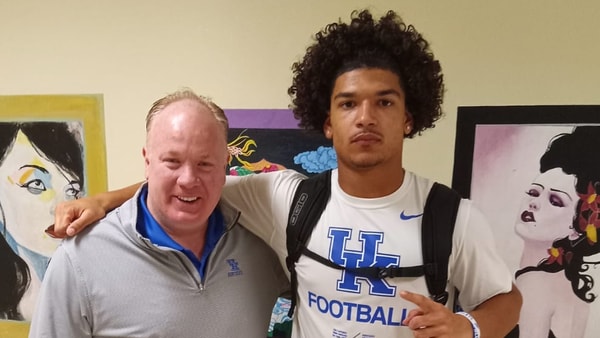

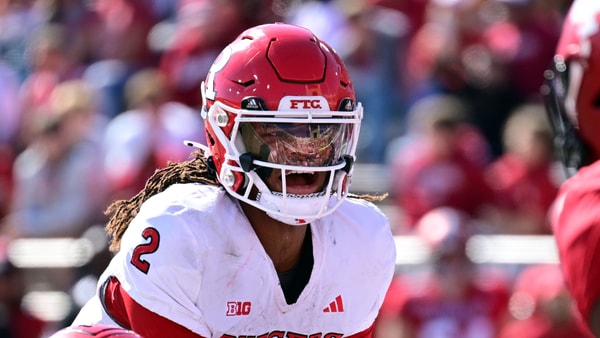

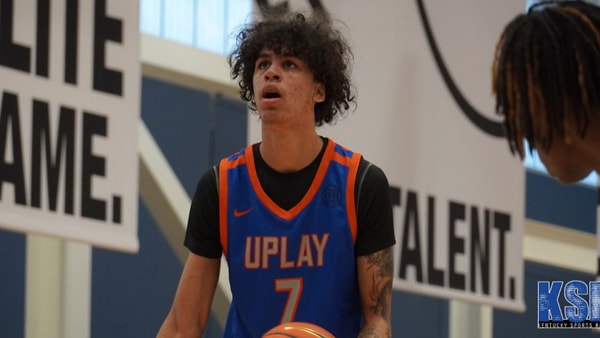
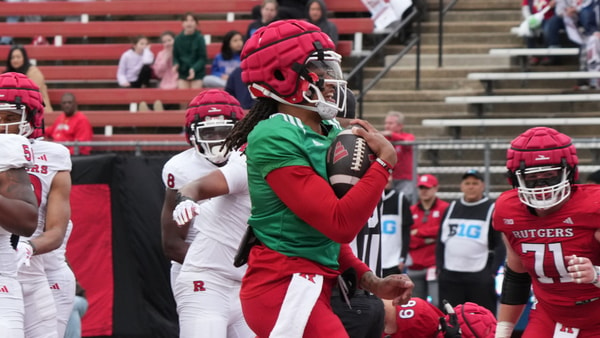
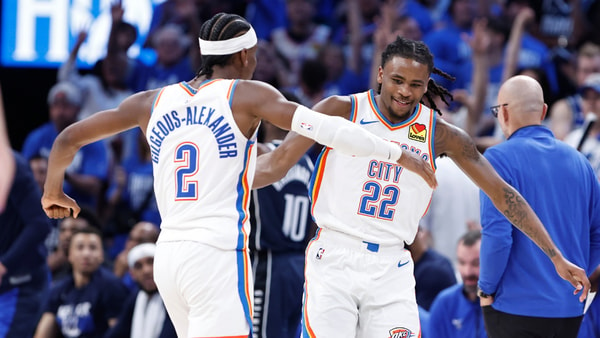

Discuss This Article
Comments have moved.
Join the conversation and talk about this article and all things Kentucky Sports in the new KSR Message Board.
KSBoard